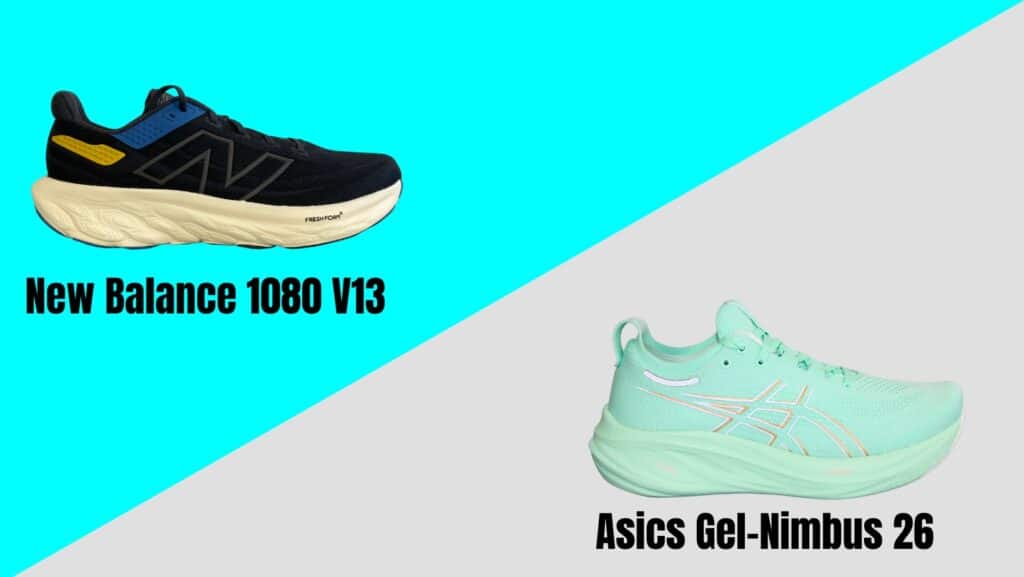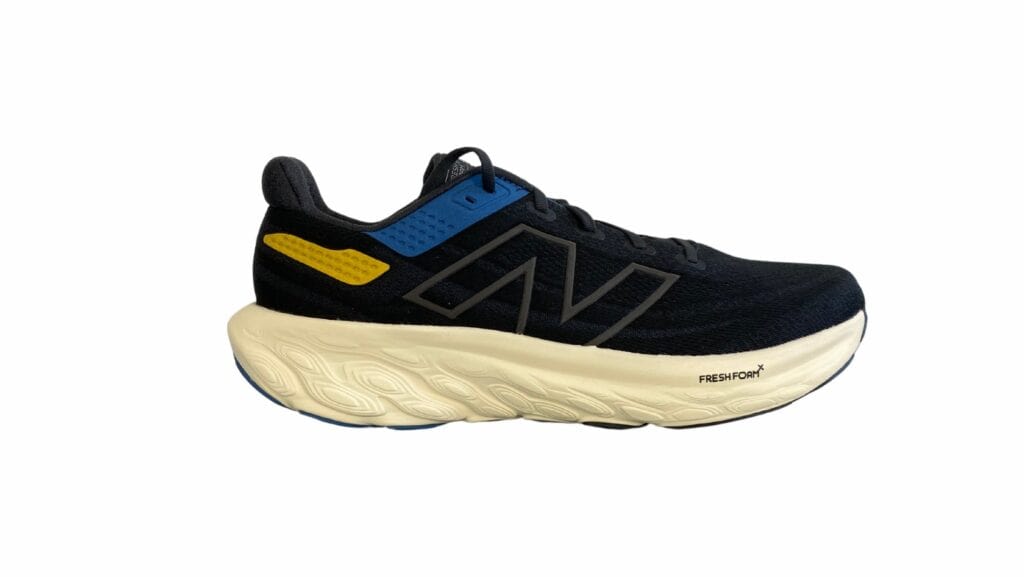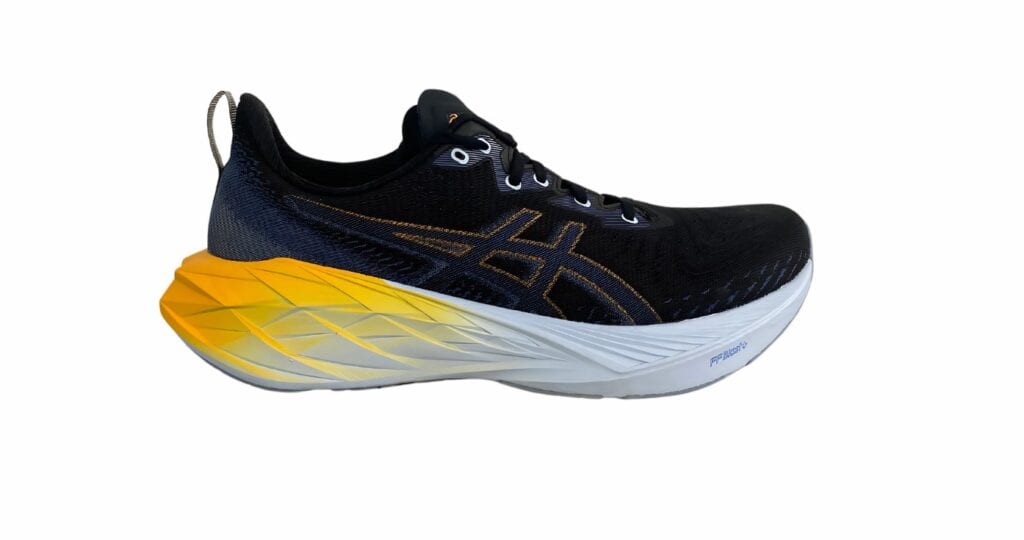Today, we will review two of the softest shoes on the market: the Asics Gel-Nimbus 26 and the New Balance 1080 v13. Although they are two of the softest shoes, I think they should be used for completely different things, and I will explain why in this article.
Specifications
First of all, we’re going to talk about the stack height on each shoe. The Nimbus 26 has 41.5mm at the rearfoot and a 33.5mm forefoot, giving you an 8mm drop. This is a really highly stacked shoe. In contrast, the 1080 V13 has 38mm on the rearfoot and 32mm on the forefoot, giving you a 6mm drop. So, there is a lower stack and a lower drop on the 1080 V13.
Then, in terms of weight, we’ve got approximately 260g for the men’s size 9 US for the New Balance and 303g for the Nimbus. So, as expected, the extra stack results in a slightly heavier shoe.
Regarding the upper, the Nimbus has a lighter upper, and the New Balance has a more plush sock-like upper. The tongue on the Nimbus is slightly thinner than the thicker, more plush tongue on the 1080. The heel counter on the 1080 V13 is much more cushioned than that on the Nimbus, which is also set slightly lower, but it has that nice gripper pull on the shoe.

Cushioning & Stability
Both shoes are considered neutral; however, I think that’s where they’re slightly different regarding cushioning. I would say the Nimbus is a more stable shoe. Both shoes have sidewalls on either side, but the Nimbus 26 has much more sole flare and a wider base under the shoe, so you can see that the sole comes out wider. It gives you a broader geometry for a more stable platform underneath your foot. The cushioning is more resilient, so what that means is when we put pressure on the cushioning, it gives you push back, whereas in the New Balance 1080 V13, it’s super compliant, so it’s super soft, and it really feels like you’re walking on a cloud.
In the 1080 V13, you’re getting a minimal response back. It’s super soft, and it facilitates movement in all directions. For that reason, the Nimbus is more for recovery and easy runs. You can do a slightly faster tempo with it, which has extra stability. However, with the 1080, I would say for recovery runs only.
If you have any history of injuries with tendons, such as your Peroneals or the Posterior Tibial Tendon, I would be apprehensive about running the New Balance because it’s so soft that it facilitates excess movement. I think this is the perfect shoe for walking or moving around on your recovery days, and I would be slightly apprehensive about faster runs, whereas this is the perfect shoe for recovery runs.
More effective stability shoes for these conditions would be the Gel-Kayano 31 or some of Asics other stability shoes.
In summary, you’ve got a lower stack, lower drop, and lighter shoe in the New Balance. You’ve got a bit more stability and a bit more resilience in the cushioning in the Nimbus, and therefore I recommend it more for recovery and slightly faster runs and this for me is more of a walking and a standing all-day shoe.


